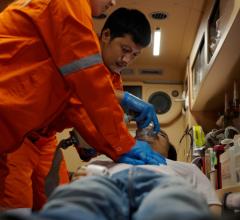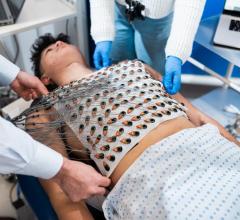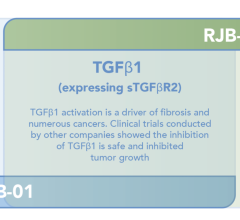
October 21, 2015 — For the first time, cardiopulmonary resuscitation (CPR) guidelines issued by the American Heart Association (AHA) recommend communities consider using social media and mobile app technology to alert CPR responders when someone nearby suffers sudden cardiac arrest. The new guidelines cite studies that show emerging mobile technologies can result in a “higher rate of bystander-initiated CPR.”
The PulsePoint Respond bystander response mobile application alerts users when a sudden cardiac arrest occurs in a nearby public place, directs them to the patient location and provides CPR guidance while paramedic units are en route to the call. The app also notifies users of the closest available automated external defibrillator (AED).
To date, the PulsePoint app has been downloaded more than 505,000 times and has alerted more than 16,500 responders to the need for CPR in more than 6,500 suspected sudden cardiac arrest incidents. PulsePoint is now active in more than 1,200 communities in 24 U.S. states and Canadian provinces.
The app has played a key role in saving several lives. The first documented PulsePoint save involved a 57-year-old truck driver near Portland, Oregon, who suffered sudden cardiac arrest outside his gym and received CPR from a PulsePoint responder. In Spokane, Washington, a five-week-old infant received CPR from a nearby off-duty EMS volunteer working at his job as a mechanic. In Sunnyvale, California, a 63-year-old father of two collapsed on a soccer field and received CPR from a college student living nearby who received a PulsePoint alert on his mobile phone.
The PulsePoint apps were created by and are a product of the PulsePoint Foundation. Physio-Control is the foundation’s implementation partner and provides services to integrate PulsePoint with public safety agency dispatch and communication systems.
“The PulsePoint mobile device system, for the first time, changes the old paradigm of waiting for trained EMS responders to arrive on scene,” said Bentley Bobrow, M.D., medical director, Bureau of Emergency Medicine and Trauma Services, Arizona Department of Health and past chair of the American Heart Association Basic Life Support Subcommittee. “PulsePoint allows communities to harness the enormous life-saving potential of their citizens, many of whom are ready and willing to perform CPR and use an AED in the most critical minutes before trained EMS providers can arrive.”
For more information: www.pulsepoint.org



 January 30, 2024
January 30, 2024 








